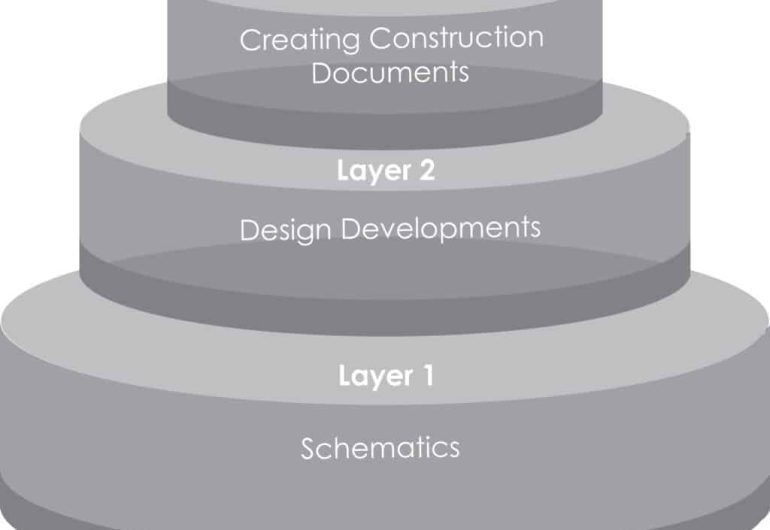How to Help the Customer Always Be Right
October 24, 2025

Erica Irvin, RID, NCIDQ, LEED AP, IIDA
Designing a project follows a similar process to baking a cake in that every project has layers and ingredients. I use this analogy in teaching my designers about the project process and design.
The recipe for every project includes multiple ingredients—scope of work, budget, project constraints, client, and design team.
The first step is to break down your recipe and gather your ingredients. Who is your client? What is the scope of work, including both project objectives and project location? Who are the stakeholders? What do you need to know to make this the best project? Consider ingredients such as existing conditions, project type, and of course your budget. How do these ingredients go together?
The beginning of design analysis includes analyzing the project, becoming familiar with the bones of an existing building, and understanding the functionality, flow, and relationships between the project elements. Now that you have your scope of work clearly defined in all parameters, it’s time to get to work. You add ingredients to make your first layer of cake by having discussions with your client, getting clear on what the project will accomplish by defining upfront goals to achieve a successful project.
Meeting those goals is of utmost importance to the designer, to consider the project a success. At the end of the day, a successful project meets the client’s goals for the project. As designers, we will one day walk away from the project, and our client will have a complete project. It is important to not only meet client’s expectations but to exceed them. One of the many tasks you have on a project is to extrapolate from your client what they need, working with them to help them determine their unknown needs. As the designer, you are the expert. You are there to fill in the gaps and provide the latest design and technology concepts. The client knows how they want their space to function and flow, and you must help build the components to make their vision a reality.
As you mix ingredients for the first layer of your cake, you have developed a floor plan in schematics. Next it is time to discuss building systems, building envelope, ceilings, cabinetry and finishes, etc. Along the way, you are continuing to discuss client needs like flow and function of their space. Since the healthcare industry may change in the next few years, these discussions need to consider present and future flexibility. Building for the future is a priority.
The first layer of your cake is now created, and you can start to add frosting. This frosting is coordination of the project with your internal team, analyzing and meeting project cost, and reviewing design and budget with your client. Client reviews include asking several questions. Did you meet your client’s expectations? Are there components of the project that need further discussions and investigations? Are you within budget?
You can now move to your next layer of cake, from schematic design to design development. This is where you start adding details and technical information that is going to develop your project into construction documents. A key coordination milestone is determining how all the components of your systems will connect and correlate to each other. Once again, you need to determine if the building system and envelope meets project capacity and allows for future growth.
Now that you have made your second layer, you can start adding another layer of frosting. This includes refining your budget and determining if you have met all your goals. You will also review the project design with the client and update changes based on their feedback.
You are now in the homestretch for the third layer of cake. This layer is creating construction documents. Getting the details, sections, elevations, and specifications in line with the project scope to show what is being built and how it will be built. This is where the details make the project. Final coordination with the client and team is your last layer of frosting. Always review the project changes with your client to ensure you are meeting project goals, budget, and outcome.
Your three-tier cake is now complete. The building has connected systems that speak to each other, and everything is detailed from room to floor. Specifications, finishes, and equipment selections are also complete and reference all materials and construction on the project.
Helping your team understand a project design from all levels creates a more coordinated and well-designed project.
